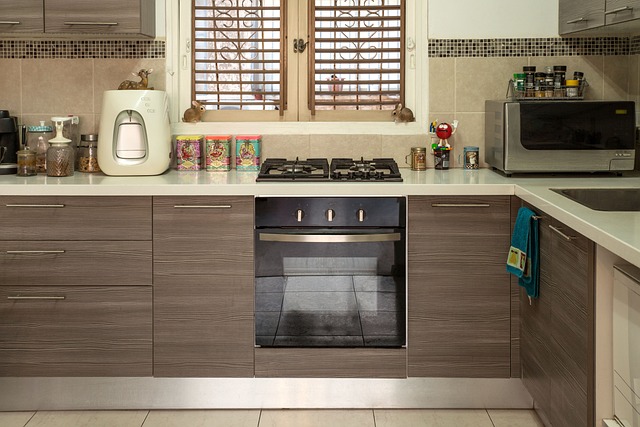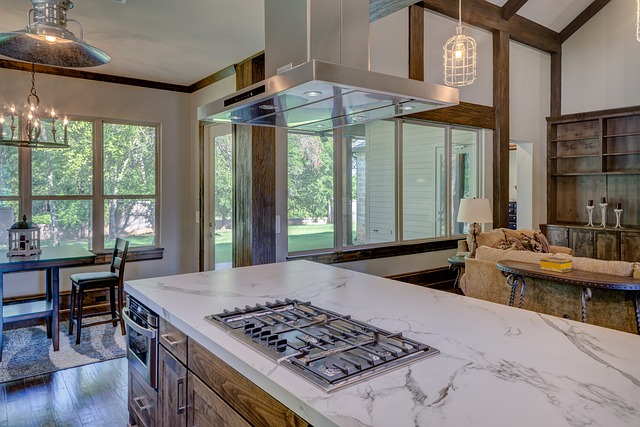The most popular standard stove size is typically 30 inches wide, 36 inches tall, and roughly 25 to 27 inches deep, excluding handles, knobs, and control panels. These common sizes guarantee a flush, seamless integration with your countertops.
There are many different sizes of stoves, also known as ranges, ranging from small, apartment-sized models to large, commercial-sized models.
You can find a wide variety of types of stoves or ranges within these standard dimensions, including freestanding ranges, slide-in stoves, and even double-oven models.
Residential stoves can range in size from 30 to 38 inches or more, depending on a number of factors, such as the number of burners, stovetop elements, oven capacity, and others. In addition, you can find kitchen stoves outside of these typical stove dimensions that are designed for either small areas or sizable commercial-style kitchens.
The amount of cooking space you require for the job also plays a role in determining the proper range size. Learn about your stove size options, how to measure, and what factors to take into account in this guide.
Standard Stove Dimensions
The most “standard” range size is about 30 inches wide, 27–29 inches deep and 36 inches tall. Be aware that the backguard, handles, knobs, and grates are not included in these measurements. The second most “standard” stove size is 36 inches wide, so consider this if you want an extra burner or element.
Since most countertop and cabinet dimensions are standardized, variations in stove sizes are more pronounced in the width than the depth or height. The range should ideally fit with your countertops’ tops and the fronts of your cabinets, with the door only protruding a few millimeters beyond the cabinets.
Size Ranges
In apartments and other kitchens with limited space, the smallest kitchen stoves, which are 20 inches wide, are commonly used. From 20 to 36 inches wide, there are many different types of stoves available, including built-in and double oven models. There are typically 36-, 48-, and 60-inch wide fancy, commercial-grade stoves for the home. Some of these stoves are taller than the typical 36 inches.
The Different Sizes of Stoves
Compact, standard, and extra-wide sizes are available for stoves. Compact, standard, and extra-wide models range in stove width from 20 to 24 inches to 30 to 36 inches. With some compact models compensating for width with height, depths are typically between 25 and 27 inches and heights are typically between 36 and 41 inches.
For the most part, these stove measurements apply to gas, electric, freestanding and slide-in ranges. The extra-wide models are frequently commercially oriented, which means they are typically available in gas, slide-in styles.
Apartment Size Stove Dimensions
Compact, space-saving stoves can aid in maximizing the workspace, traffic flow, and storage in your kitchen so that it becomes the center of activity it was intended to be. Expect around the following dimensions when shopping models:
Width: 20–24 inches
Depth: 25–27 inches including the closed door, which should protrude beyond cabinets, but without handles and knobs
Height: 36–41 inches, up to 46 inches including a backguard
Freestanding Range Dimensions
Most likely, a freestanding range comes to mind when you think of a typical range. Since they typically come in standard stove sizes, they are a popular option. But bear in mind that the backguard can heighten you by up to a foot.
Width: 30–36 inches
Depth: 25–27 inches including the closed door, which should protrude beyond cabinets, but without handles and knobs
Height: around 36 inches, up to 46 inches including the backguard
Slide-in Range Dimensions
Slide-in ranges are made to look completely flush with countertops for a seamless, upscale appearance. They come in extra-wide sizes as well as standard stove sizes, typically in the form of a range designed for commercial use.
Width: 30–60 inches
Depth: 25–27 inches including the closed door, which should protrude beyond cabinets, but without handles and knobs
Height: around 36 inches
Since they don’t have a backguard, slide-in ranges are a particularly good option for kitchen islands.
How Are Stoves Measured?
There are various ways to measure stoves. Look for these in shopping specifications:
Dimensions calculated without the door, handles, knobs, grates, or a backguard. According to these dimensions, cabinets and countertops should be in line.
To ensure you have enough clearance, measure the door both closed and open.
Dimensions that take handles, knobs, grates, or a backguard into consideration.
Cutout dimensions are helpful when shopping because you can simply measure your cutout and choose a range based on those dimensions.
Note that measurements may be slightly rounded up. A 30-inch wide range, for instance, is typically closer to 29-7/8 inches.

How to Measure for Stove Dimensions?
Finding the right fit requires measuring your cutout before making a purchase. Before installing your range, follow these steps and compare your measurements with the cutout dimensions listed in the product specifications or product manual.
Measure the Width of the Cutout
Utilizing a measuring tape, determine the cutout width between each cabinet. Make sure you are measuring the narrowest part of the cutout, which may be between the countertops if they protrude into the cutout, or it may be close to the back or front of cabinets.
Measure the Depth of the Cutout
Measure the depth of the cutout, excluding the hinge and the door, from the wall to the front edge of the cabinet using a measuring tape.
Measure the Height of the Cutout
Using a measuring tape, determine the distance between the floor and the tops of the countertops where the stove cutout is located. In case the floor isn’t level, take measurements both toward the front and back of the opening. Most stoves have movable leveling legs if you discover that it isn’t level.
Measure the Surrounding Space
You will require some additional space around the range for cooking activities in addition to the cutout.
Space in front of the range: It’s a good idea to leave at least 40 inches of space in front of a range and 48–60 inches between the range and other appliances so that the door can open completely and you still have room to move around it, especially if you have a kitchen island. To ensure a good fit, check the product listings for open door dimensions.
Space above the cooking surface: Depending on what is above the range, like a vent hood or over-the-range microwave, the minimum required space above the cooking surface may change. However, it’s a good idea to make sure you’re about 2 to 2.5 feet above the shooting range. For requirements in your area, be sure to check the local building codes.
Measure the Stove’s Path to Its Location
Make sure to plot the range’s path to its destination, taking entryways into account, before selecting a size. The stove must pass through all of the hallways and entryways before it can be placed in the designated area.
How Do I Measure for a Freestanding Range?
To measure for a freestanding range from KitchenAid, please leave 48 to 60 inches between the range and other appliances in addition to at least 40 inches of workspace in front of the range. This guarantees a smooth workflow and provides room to open the door as well as lots of room for creativity..
To find out the precise clearances required for your stove, refer to the product guides and installation instructions for appliances.
How to Decide What Range Size is Right for Me?
Think about your cooking preferences, kitchen layout, and cutouts when deciding which range size to go with. Cooking style: If you use your stovetop frequently, upgrading to a 36-inch wide range frequently includes an extra, fifth burner. Consider a double oven range with extra capacity if you frequently find yourself needing to cook various dishes at various temperatures.
Size of current range: Naturally, it will be simplest to simply replace your current range with one of the same size. Do you feel comfortable in your current size? Remember that if you want to install a wider range than you currently have, you might need to make some cabinet modifications.
Kitchen layout: Have you got a long, spacious kitchen? Consider a commercial-style range that is extra-wide. If your kitchen is small, do you prioritize storage space over cooking space? Considering small-space or compact stoves
Are Apartment-sized Stoves Available for Smaller Kitchens?
It is possible to save horizontal space in your kitchen by using a small, apartment-sized stove that is designed for smaller spaces. These stoves typically measure 20 to 24 inches wide, 25 to 27 inches deep, and about 36 inches tall, not counting control panels, which are the same dimensions as standard-sized stoves.
Apartment-sized stoves come in both gas and electric and usually feature at least 4 burners, despite their reduced dimensions. However, compared to the majority of standard-sized stoves, it has a smaller overall cooktop surface area and oven capacity.
Because of this, some homeowners with small kitchens or challenging kitchen layouts choose to combine a wall oven and separate cooktop.
If this sounds like the best setup for your space, explore wall ovens and cooktop options from KitchenAid.
Read about What Is A Larder?

